Do you have a question about the Yamaha YZF R1 2021 and is the answer not in the manual?
The owner's responsibility for safe operation, proper techniques, and maintenance.
Importance of pre-operation checks, rider/passenger posture, and awareness of other motorists.
Risks associated with inexperienced operators and common rider errors leading to accidents.
Importance of wearing helmets, face shields, jackets, boots, and gloves for protection.
Dangers of carbon monoxide from exhaust and precautions for ventilation.
Guidelines for adding accessories or cargo to maintain stability and avoid accidents.
Warnings about using aftermarket parts and potential safety hazards.
Instructions for safely transporting the motorcycle in another vehicle.
Illustration and labels for the left side of the motorcycle, detailing components.
Illustration and labels for the right side of the motorcycle, detailing components.
Identification and location of handlebar controls, levers, and instrument panel components.
Explanation of the Yamaha Ride Control system, sensors, and G-force detection.
Description of the four power delivery modes that regulate throttle response.
How the traction control system maintains grip by regulating engine power.
System that regulates engine power output when a sideward slide is detected.
System that reduces engine torque during deceleration electronically.
System to help achieve smooth and swift launches from the starting grid.
Functionality of the clutch-less, electronically-assisted gear shifting system.
Settings for the lift control system (1, 2, 3, OFF) to reduce wheel lift.
System regulating hydraulic brake pressure for front/rear wheels.
Electronic racing suspension system with objective-based tuning interface.
Visual representation of how YRC functions are applied during riding phases.
Operation and positions of the main switch and steering lock mechanism.
Step-by-step procedure for locking the motorcycle's steering.
Identification and function of switches on the left and right handlebars.
Function of the switch for starting and stopping the engine.
Using the mode switch to change YRC modes and edit settings.
Operation of the wheel switch for navigating menus and adjusting settings.
Explanation of various indicator and warning lights on the instrument panel.
Overview of the instrument panel display modes and available information.
Displays the vehicle's traveling speed.
Shows engine speed in revolutions per minute.
Displays riding information like temperature, tripmeters, and fuel consumption.
Shows the current gear position and neutral indicator.
Shows current MODE and related settings like PWR, TCS, SCS, EBM.
Shows the on/off status of LCS, QSS, LIF, and BC YRC items.
Stopwatch function to measure and record lap times.
Overview of the MENU screen and its setting modules.
Setting the main screen display modes between STREET MODE and TRACK MODE.
Customizing YRC modes (A-D) by adjusting items like PWR, TCS, SCS, LCS, etc.
Details on the variable traction control system and its 9 setting levels.
Settings for the launch control system (1, 2, OFF).
Operation and settings (1, 2, OFF) for the quick shifter's upshift and downshift functions.
Settings for the lift control system (1, 2, 3, OFF) to reduce wheel lift.
Procedures for adjusting ERS mode settings via the menu.
Module to view and delete lap time records, showing fastest and average times.
Function to record vehicle and riding information, accessed via a smart device.
Module to record distance traveled between maintenance items like engine oil changes.
Allows switching display units between kilometers and miles, and setting fuel consumption units.
Settings for the shift indicator light pattern, brightness, and tachometer color.
Turning the tachometer color display on/off and setting green/orange zones.
Turning the revolution peak hold indicator on or off.
Setting how information display items are grouped on the main screen.
Adjusting the general brightness level of the display screen.
Setting the clock time.
Resets most settings to factory defaults.
Operation of the clutch lever for disengaging the drivetrain and shifting.
Operation of the shift pedal for changing gears and its relation to the quick shifter.
Location and adjustment of the front brake lever position.
Location and operation of the rear brake pedal.
Explanation of BC1 (ABS) and BC2 (Cornering ABS) settings.
How to open and close the fuel tank cap, with safety warnings.
Importance of sufficient fuel, refueling precautions, and recommended fuel type.
Checking fuel tank hoses for proper connection, damage, and blockage.
Function of the catalytic converter and warnings about hot exhaust systems.
Instructions for removing and installing the passenger and rider seats.
Function of the Communication Control Unit for data recording and YRC settings.
Location and use of the document storage space, with precautions for heat-sensitive items.
How to fold mirrors for parking and the importance of returning them before riding.
Checks for fuel level, lines, and overflow hose for proper operation.
Checks for oil level, adding oil if necessary, and checking for oil leaks.
Checks for coolant level, adding coolant if necessary, and checking for system leaks.
Checks for brake operation, fluid level, pads, and leaks.
Checks for brake operation, fluid level, pads, and leaks.
Checks for operation, cable lubrication, and lever free play.
Check for smooth rotation and automatic return.
Ensure smooth operation and lubricate if necessary.
Check chain slack, alignment, condition, and lubricate.
Check for damage, tread depth, and air pressure.
Ensure smooth operation and lubricate pedal pivots.
Ensure smooth operation and lubricate lever pivots.
Ensure smooth operation and lubricate pivot.
Check and tighten all chassis fittings and fasteners.
Ensure the air intake duct is not blocked.
Check operation of instruments, lights, signals, and switches.
Check operation of the ignition circuit cut-off system.
Guidelines for the initial break-in period of the engine for optimal performance.
Step-by-step instructions for starting the motorcycle's engine, including safety interlocks.
Explanation of gear shifting procedures and the use of the quick shifter.
Instructions for parking the motorcycle safely, considering hot components and surface stability.
Information about the tools provided with the motorcycle for basic maintenance.
Schedule for emission control system maintenance checks and replacements.
Schedule for general maintenance tasks, lubrication, and inspections.
How to check spark plugs, their condition, and gap for engine health.
Checks for canister system hoses and breather for proper operation.
How to check engine oil level and procedure for changing oil and filter.
Importance of checking coolant level and recommended coolant type.
When to replace the air filter element for engine performance.
How to check and correct the engine idling speed.
Importance of checking and adjusting valve clearance for engine health.
Importance of tire condition, replacement, and safety related to speed.
How to check and adjust tire air pressure before each ride.
How to inspect tires for wear indicators, damage, and tread depth.
Care and inspection of cast magnesium wheels for performance and safety.
How to measure and adjust clutch lever free play for proper operation.
How to check for free play in the brake lever and potential issues.
Operation of brake light switches and their relation to ABS.
How to check brake pad wear using indicators.
How to check front and rear brake fluid levels and what low levels may indicate.
Recommended intervals for changing brake fluid and replacing seals/hoses.
How to check and adjust drive chain slack for proper operation.
Procedure for cleaning and lubricating the drive chain using O-ring chain lubricant.
How to check control cables and lubricate them if necessary.
Checking throttle grip operation and lubricating the housing.
Checking pedal operation and lubricating pivots.
Checking lever operation and lubricating pivots.
Checking sidestand operation and lubricating its pivot and contact surfaces.
Lubricating swingarm pivots at specified intervals.
Checking front fork condition and operation for scratches, leaks, and smooth movement.
Checking steering bearings for wear or looseness to ensure safe operation.
Checking wheel bearings for play or smooth rotation.
Information about the battery type and location, with precautions.
Advice on charging the battery, including VRLA battery charger requirements.
Instructions for storing the battery long-term, including charging and placement.
Location of main fuse, ABS motor fuse, and fuse box 1, and procedure for replacing fuses.
Information on full-LED lighting, and troubleshooting if lights don't work.
Using maintenance stands when the motorcycle needs to be upright for service.
General advice on troubleshooting common engine, fuel, and ignition system problems.
A flowchart to diagnose and resolve common starting and running issues.
How to deal with engine overheating, including checking coolant and safety precautions for the radiator cap.
Precautions for cleaning and caring for matte-finished parts.
General guidelines for washing, cleaning, and polishing the motorcycle.
Detailed steps for washing the motorcycle, including precautions for different parts and water pressure.
Special care instructions for cleaning the titanium muffler.
General instructions for storing the vehicle in a cool, dry place and using fuel stabilizer.
Specific steps for storing the vehicle for 60 days or more, including fuel system and engine protection.
Location and importance of vehicle and engine identification numbers.
Location and recording of the vehicle identification number.
Location and recording of the engine serial number.
Location and information found on the model label.
Location and recording of the key identification number.
Information on the label detailing exhaust emission specifications.
Location of the diagnostic connector for vehicle data access.
How vehicle data is stored, used, and handled according to privacy policy.
Procedures for reporting vehicle safety defects to NHTSA and Yamaha.
Federal laws prohibiting tampering with noise control systems.
A chart for recording maintenance intervals and service details.
Details of the limited warranty for Yamaha motorcycles, including coverage and exclusions.
Warranty covering defects related to emissions control systems.
Common questions and answers regarding warranty responsibilities, coverage, and transfers.
How to obtain warranty service and contact Yamaha customer relations.
Information about Yamaha Extended Service plans for continued protection after the limited warranty.
The owner's responsibility for safe operation, proper techniques, and maintenance.
Importance of pre-operation checks, rider/passenger posture, and awareness of other motorists.
Risks associated with inexperienced operators and common rider errors leading to accidents.
Importance of wearing helmets, face shields, jackets, boots, and gloves for protection.
Dangers of carbon monoxide from exhaust and precautions for ventilation.
Guidelines for adding accessories or cargo to maintain stability and avoid accidents.
Warnings about using aftermarket parts and potential safety hazards.
Instructions for safely transporting the motorcycle in another vehicle.
Illustration and labels for the left side of the motorcycle, detailing components.
Illustration and labels for the right side of the motorcycle, detailing components.
Identification and location of handlebar controls, levers, and instrument panel components.
Explanation of the Yamaha Ride Control system, sensors, and G-force detection.
Description of the four power delivery modes that regulate throttle response.
How the traction control system maintains grip by regulating engine power.
System that regulates engine power output when a sideward slide is detected.
System that reduces engine torque during deceleration electronically.
System to help achieve smooth and swift launches from the starting grid.
Functionality of the clutch-less, electronically-assisted gear shifting system.
Settings for the lift control system (1, 2, 3, OFF) to reduce wheel lift.
System regulating hydraulic brake pressure for front/rear wheels.
Electronic racing suspension system with objective-based tuning interface.
Visual representation of how YRC functions are applied during riding phases.
Operation and positions of the main switch and steering lock mechanism.
Step-by-step procedure for locking the motorcycle's steering.
Identification and function of switches on the left and right handlebars.
Function of the switch for starting and stopping the engine.
Using the mode switch to change YRC modes and edit settings.
Operation of the wheel switch for navigating menus and adjusting settings.
Explanation of various indicator and warning lights on the instrument panel.
Overview of the instrument panel display modes and available information.
Displays the vehicle's traveling speed.
Shows engine speed in revolutions per minute.
Displays riding information like temperature, tripmeters, and fuel consumption.
Shows the current gear position and neutral indicator.
Shows current MODE and related settings like PWR, TCS, SCS, EBM.
Shows the on/off status of LCS, QSS, LIF, and BC YRC items.
Stopwatch function to measure and record lap times.
Overview of the MENU screen and its setting modules.
Setting the main screen display modes between STREET MODE and TRACK MODE.
Customizing YRC modes (A-D) by adjusting items like PWR, TCS, SCS, LCS, etc.
Details on the variable traction control system and its 9 setting levels.
Settings for the launch control system (1, 2, OFF).
Operation and settings (1, 2, OFF) for the quick shifter's upshift and downshift functions.
Settings for the lift control system (1, 2, 3, OFF) to reduce wheel lift.
Procedures for adjusting ERS mode settings via the menu.
Module to view and delete lap time records, showing fastest and average times.
Function to record vehicle and riding information, accessed via a smart device.
Module to record distance traveled between maintenance items like engine oil changes.
Allows switching display units between kilometers and miles, and setting fuel consumption units.
Settings for the shift indicator light pattern, brightness, and tachometer color.
Turning the tachometer color display on/off and setting green/orange zones.
Turning the revolution peak hold indicator on or off.
Setting how information display items are grouped on the main screen.
Adjusting the general brightness level of the display screen.
Setting the clock time.
Resets most settings to factory defaults.
Operation of the clutch lever for disengaging the drivetrain and shifting.
Operation of the shift pedal for changing gears and its relation to the quick shifter.
Location and adjustment of the front brake lever position.
Location and operation of the rear brake pedal.
Explanation of BC1 (ABS) and BC2 (Cornering ABS) settings.
How to open and close the fuel tank cap, with safety warnings.
Importance of sufficient fuel, refueling precautions, and recommended fuel type.
Checking fuel tank hoses for proper connection, damage, and blockage.
Function of the catalytic converter and warnings about hot exhaust systems.
Instructions for removing and installing the passenger and rider seats.
Function of the Communication Control Unit for data recording and YRC settings.
Location and use of the document storage space, with precautions for heat-sensitive items.
How to fold mirrors for parking and the importance of returning them before riding.
Checks for fuel level, lines, and overflow hose for proper operation.
Checks for oil level, adding oil if necessary, and checking for oil leaks.
Checks for coolant level, adding coolant if necessary, and checking for system leaks.
Checks for brake operation, fluid level, pads, and leaks.
Checks for brake operation, fluid level, pads, and leaks.
Checks for operation, cable lubrication, and lever free play.
Check for smooth rotation and automatic return.
Ensure smooth operation and lubricate if necessary.
Check chain slack, alignment, condition, and lubricate.
Check for damage, tread depth, and air pressure.
Ensure smooth operation and lubricate pedal pivots.
Ensure smooth operation and lubricate lever pivots.
Ensure smooth operation and lubricate pivot.
Check and tighten all chassis fittings and fasteners.
Ensure the air intake duct is not blocked.
Check operation of instruments, lights, signals, and switches.
Check operation of the ignition circuit cut-off system.
Guidelines for the initial break-in period of the engine for optimal performance.
Step-by-step instructions for starting the motorcycle's engine, including safety interlocks.
Explanation of gear shifting procedures and the use of the quick shifter.
Instructions for parking the motorcycle safely, considering hot components and surface stability.
Information about the tools provided with the motorcycle for basic maintenance.
Schedule for emission control system maintenance checks and replacements.
Schedule for general maintenance tasks, lubrication, and inspections.
How to check spark plugs, their condition, and gap for engine health.
Checks for canister system hoses and breather for proper operation.
How to check engine oil level and procedure for changing oil and filter.
Importance of checking coolant level and recommended coolant type.
When to replace the air filter element for engine performance.
How to check and correct the engine idling speed.
Importance of checking and adjusting valve clearance for engine health.
Importance of tire condition, replacement, and safety related to speed.
How to check and adjust tire air pressure before each ride.
How to inspect tires for wear indicators, damage, and tread depth.
Care and inspection of cast magnesium wheels for performance and safety.
How to measure and adjust clutch lever free play for proper operation.
How to check for free play in the brake lever and potential issues.
Operation of brake light switches and their relation to ABS.
How to check brake pad wear using indicators.
How to check front and rear brake fluid levels and what low levels may indicate.
Recommended intervals for changing brake fluid and replacing seals/hoses.
How to check and adjust drive chain slack for proper operation.
Procedure for cleaning and lubricating the drive chain using O-ring chain lubricant.
How to check control cables and lubricate them if necessary.
Checking throttle grip operation and lubricating the housing.
Checking pedal operation and lubricating pivots.
Checking lever operation and lubricating pivots.
Checking sidestand operation and lubricating its pivot and contact surfaces.
Lubricating swingarm pivots at specified intervals.
Checking front fork condition and operation for scratches, leaks, and smooth movement.
Checking steering bearings for wear or looseness to ensure safe operation.
Checking wheel bearings for play or smooth rotation.
Information about the battery type and location, with precautions.
Advice on charging the battery, including VRLA battery charger requirements.
Instructions for storing the battery long-term, including charging and placement.
Location of main fuse, ABS motor fuse, and fuse box 1, and procedure for replacing fuses.
Information on full-LED lighting, and troubleshooting if lights don't work.
Using maintenance stands when the motorcycle needs to be upright for service.
General advice on troubleshooting common engine, fuel, and ignition system problems.
A flowchart to diagnose and resolve common starting and running issues.
How to deal with engine overheating, including checking coolant and safety precautions for the radiator cap.
Precautions for cleaning and caring for matte-finished parts.
General guidelines for washing, cleaning, and polishing the motorcycle.
Detailed steps for washing the motorcycle, including precautions for different parts and water pressure.
Special care instructions for cleaning the titanium muffler.
General instructions for storing the vehicle in a cool, dry place and using fuel stabilizer.
Specific steps for storing the vehicle for 60 days or more, including fuel system and engine protection.
Location and importance of vehicle and engine identification numbers.
Location and recording of the vehicle identification number.
Location and recording of the engine serial number.
Location and information found on the model label.
Location and recording of the key identification number.
Information on the label detailing exhaust emission specifications.
Location of the diagnostic connector for vehicle data access.
How vehicle data is stored, used, and handled according to privacy policy.
Procedures for reporting vehicle safety defects to NHTSA and Yamaha.
Federal laws prohibiting tampering with noise control systems.
A chart for recording maintenance intervals and service details.
Details of the limited warranty for Yamaha motorcycles, including coverage and exclusions.
Warranty covering defects related to emissions control systems.
Common questions and answers regarding warranty responsibilities, coverage, and transfers.
How to obtain warranty service and contact Yamaha customer relations.
Information about Yamaha Extended Service plans for continued protection after the limited warranty.
| Bore x Stroke | 79.0 mm x 50.9 mm |
|---|---|
| Compression Ratio | 13.0:1 |
| Starter System | Electric |
| Transmission | 6-speed |
| Final Drive | Chain |
| Front Tire | 120/70 ZR17 |
| Rear Tire | 190/55 ZR17 |
| Engine Type | Liquid-cooled, 4-stroke, DOHC, 4-valve, inline 4-cylinder |
| Power | 200 hp |
| Torque | 113.3 Nm (11.6 kg-m) @ 11, 500 rpm |
| Fuel Delivery | Fuel Injection |
| Ignition | TCI |
| Front Suspension | 43mm KYB inverted fork, fully adjustable; 4.7-in travel |
| Rear Suspension | KYB single shock, fully adjustable; 4.7-in travel |
| Front Brakes | Dual 320mm discs |
| Rear Brakes | 220mm disc |
| Wheelbase | 55.3 in (1405 mm) |
| Seat Height | 855 mm |
| Fuel Capacity | 17 liters |
| Wet Weight | 448 lb |
| Length | 2075 mm |
| Width | 690 mm |
| Height | 45.3 in |
| Ground Clearance | 5.1 in (130 mm) |
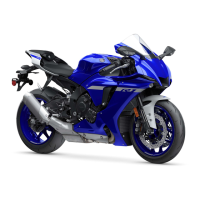
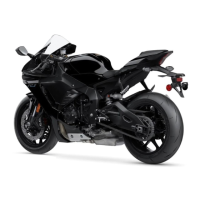
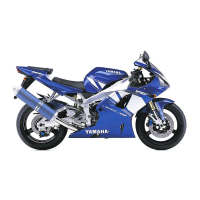
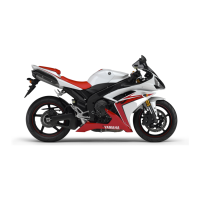
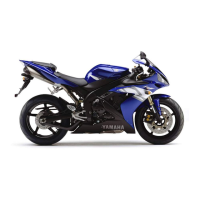
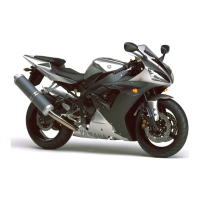



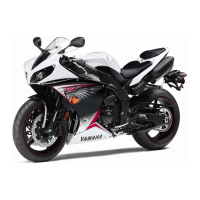
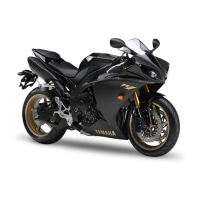
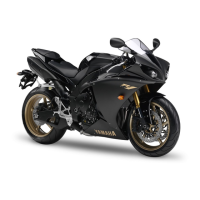
